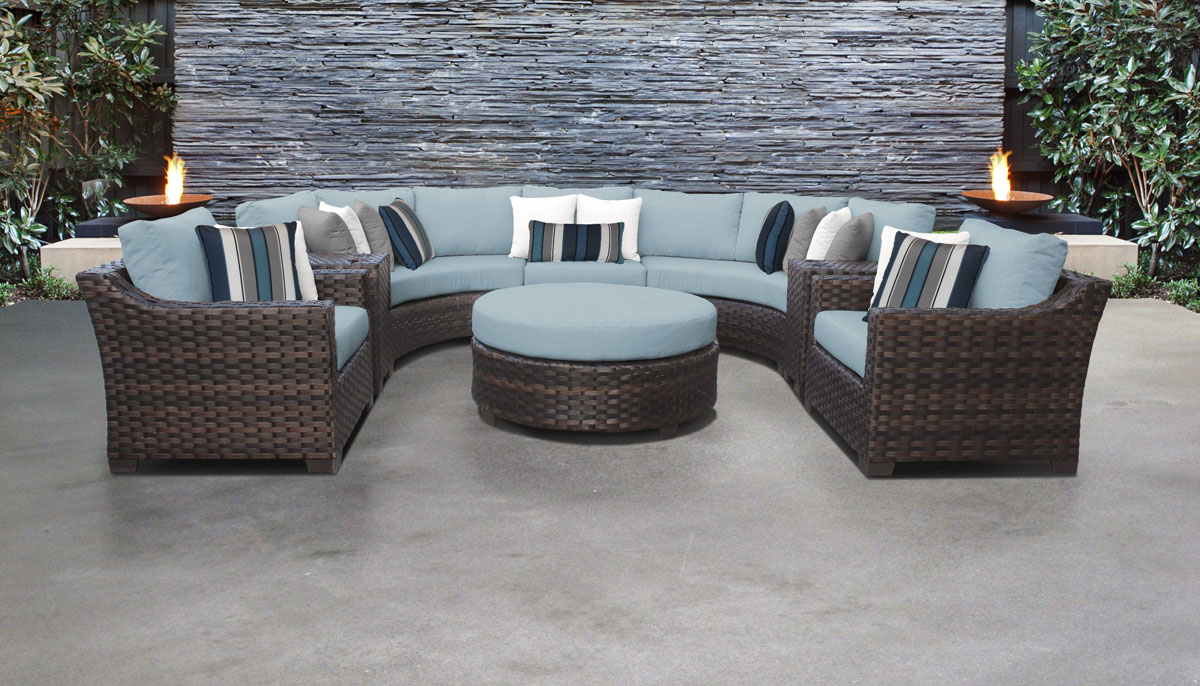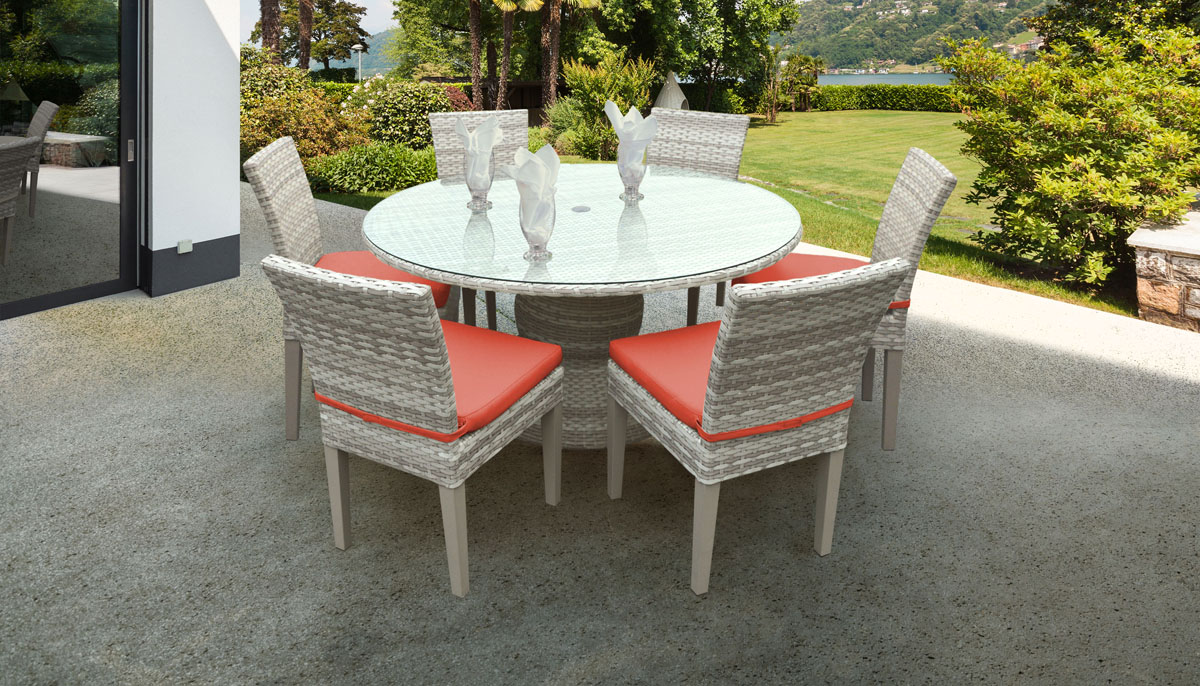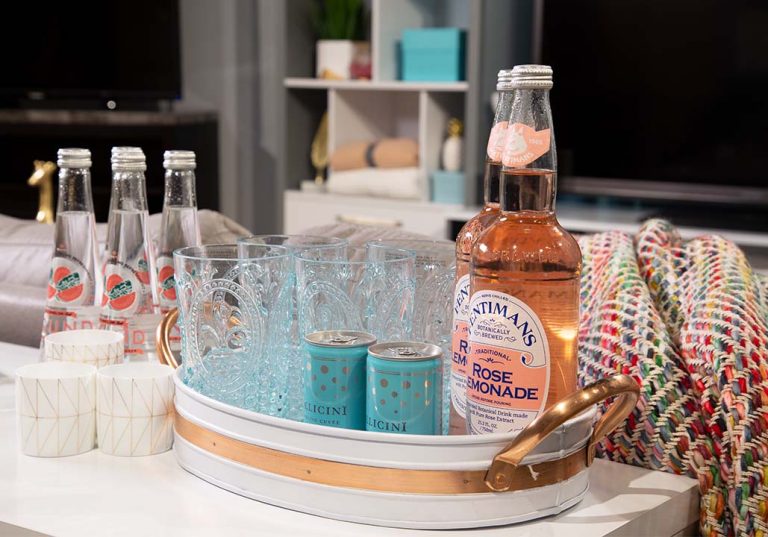
Get Inspired
How to Use a Color Wheel to Upgrade Your Living Room
The color wheel’s roots date back to the mid-1600s. It was then when Sir Isaac Newton’s work with prisms led to the discovery of the visible spectrum of light and he developed the first color wheel, starting with red and ending with purple. Today, designers everywhere utilize the underlying theory of the color wheel to create appealing palettes. Learn how you can use the power of the color wheel when redecorating your own living room.
Color Wheel Basics
Before you can dive into colors and color schemes for your living room, you must first understand the fundamental components of the wheel. The basic 12-color wheel is divided into three categories: primary colors, secondary colors and tertiary colors. The primary colors are red, yellow and blue. Created by mixing primary colors, secondary colors include orange, green and violet. And finally, tertiary colors are a combination of secondary and primary colors. Yellow-orange, red-orange, red-violet, blue-violet, blue-green and yellow-green make up this category.
It’s important to note that the 12-color wheel only shows the hue, or basic color. However, more complex color wheels may also show the hue along with several of its values. Values are tints, shades or tones created by mixing in white, gray or black. Adding white creates a tint, while the addition of black produces a shade and mixing a color with gray results in a tone.
Color Schemes for Your Living Room
Now that you have a firm grasp of colors and values, it’s time to talk about color schemes – you know, those colors that blend nicely together to create a welcoming environment.
Monochromatic Color Schemes
When you use different values of the same hue in your living room, you’re utilizing a monochromatic color scheme. This particular color scheme is easy to implement, making it a preferred choice of first-time home decorators. Worried about monotony? Mix things up with textured surfaces – like leather sofas, velvet chairs and orange-peel texture walls.
Try this: Position a navy blue sofa on a boldly patterned carpet, then add accent colors in light to dark values of navy blue. Hang medium blue velvet curtains to contrast cool gray textured walls. To complete the look, add the Swedish Classics Wine Cabinet (19CM7541-I645) from Twin Star Home™ with a striking Baltic blue finish and reeded panels for visual interest. When you add a fireplace insert from ClassicFlame®, the market leader in electric fireplaces, you’ll add a cozy touch to your monochromatic living room.

Analogous Colors in Your Living Room
The analogous color scheme adds a bit more color and interest to your living room. In this color scheme, you’ll choose two to three colors that are next to each other on the color wheel. For instance, blue and green or red, orange and yellow. To create a cohesive look, use the 60-30-10 rule, which means you use 60 percent of one color, 30 percent of a secondary color and 10 percent of an accent color.
Try this: Start off with a fresh white sofa. Then, add emerald green and gold accent pillows, emerald green side tables and a rug that incorporates both green and gold hues. Add the Don’t Fret Storage Ottoman (SB6498-NT01) in white – its mirror panel is sure to draw the eye. Paint your walls a warm shade of yellow to tie everything together.

Complementary Color Schemes
Complementary colors sit directly across from one another on the color wheel, like purple and yellow or blue and orange. As you may have guessed, the complementary color scheme uses two complementary colors to create an invigorating space. In most cases, you’ll want these two hues to account for about 80% of the colors in the room. Liven up the look even more by accenting with analogous hues.

Try this: Go for a nautical-inspired look in your living room. Begin with a coral sofa, and paint your walls a contrasting shade of midnight blue. Add coral accent pieces on your coffee table and walls, place blue pillows on your couch and energize the look with a few lime green planters. Top things off with the duraflame® 28″ Infrared Quartz Electric Lantern (10ILH8973) for a classic look that’s right at home with your seaside aesthetic.
Triad Color Schemes for Your Living Room
The most daring of the four color schemes, the triad color scheme is made up of any three colors that form a triangle at the center of the wheel – think purple, orange and green or blue, red and orange. Although this color scheme is vibrant and contrasting, it looks well-balanced. You can choose to use all three colors equally for a bold look, or select a dominant color for a more subdued, yet lively, appearance in your living room.

Try this: Combine a dusty purple sofa with yellow and sky blue accent pillows and neutral armchairs. Paint one accent wall a similar dusty purple color and mount wall decorations that feature touches of yellow and sky blue. The Genevieve™ TV Stand (26CM7506-I622) finishes your living room with glass-front doors, decorative mullions and a weathered finish that complements deeper hues and lets bright touches take center stage.
Upgrade Your Living Room Furniture
Ready to put your new color theory skills to the test? Find the furniture you need to give your living room a much-needed facelift from Twin Star Home™.



